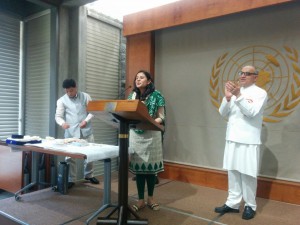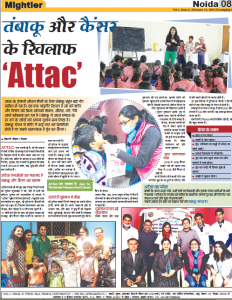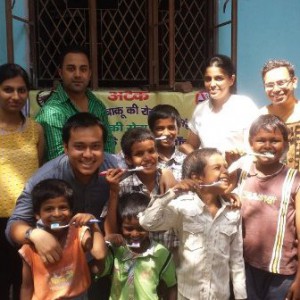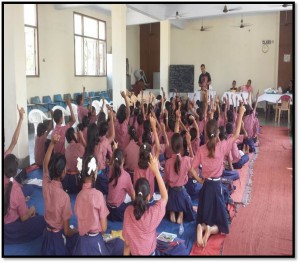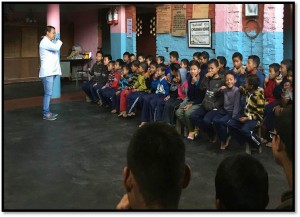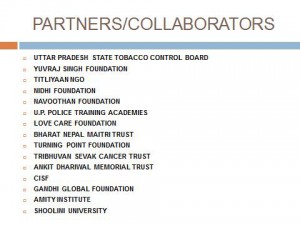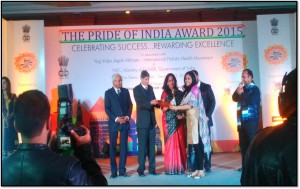Il gruppo BRICS (Brasile, Russia, India, Cina e Sudafrica) sta contribuendo alla salute globale in un’ottica di multilateralismo fondato su stanziamenti economici, “capacity building”, facilitato accesso a terapie e assistenza, e sviluppo di nuove strategie e strumenti. Il crescente investimento in innovazione sanitaria, produzione di medicine, diagnostici e vaccini da parte dei BRICS prevedibilmente continuerà a rappresentare un beneficio per i Paesi poveri

by Daniele Dionisio
Membro, European Parliament Working Group on Innovation, Access to Medicines and Poverty-Related Diseases
Progetto Policies for Equitable Access to Health – PEAH
L’ Impegno dei BRICS per la Salute Globale
Brasile, Russia, India, Cina e Sudafrica, gruppo espresso dall’acronimo BRICS, sono note economie emergenti e globalmente rappresentano circa il 25% del prodotto interno lordo mondiale.
Se la crescita dei BRICS sembra ora rallentare, questi Paesi hanno mostrato migliori capacità di recupero dalla recente crisi finanziaria globale rispetto a USA ed Europa. Non stupisce, perciò, che il capitolo di spesa dei BRICS per cooperazione internazionale sia in ascesa. Complessivamente, i BRICS enfatizzano la cooperazione Sud-Sud e stanno contribuendo alla salute globale in un’ottica di multilateralismo fondato su stanziamenti economici, “capacity building”, facilitato accesso a terapie e assistenza, e sviluppo di nuove strategie e strumenti.
Dopo il loro primo meeting a Pechino nel 2011, i ministri della Salute dei BRICS decisero nel 2012 di incontrarsi annualmente in occasione delle assemblee mondiali OMS. Ma già nel loro primo meeting quattro priorità furono condivise: rafforzamento dei sistemi sanitari nazionali BRICS (garantendo l’accesso alle tecnologie per la salute), investire nella lotta alle patologie infettive e a quelle non trasmissibili, sostegno a organizzazioni internazionali di riferimento e a partenariati per la salute globale, e trasferimento di tecnologie ai Paesi in via di sviluppo anche al fine della produzione autonoma di farmaci generici di qualità.
Le Sfide
Con l’eccezione del Sudafrica, le patologie non trasmissibili rappresentano il maggior problema per i BRICS. E l’incidenza è in crescita: la Russia ha uno dei più alti tassi mondiali di malattie cardiovascolari; mentre il carico di diabete è elevatissimo per Cina e India.
In aggiunta, i Paesi BRICS (Russia esclusa) sono endemici per almeno una delle più comuni patologie tropicali neglette (NTDs). Ed è dell’ ottobre 2015 l’impegno dei ministri BRICS della Salute “to strive for achieving the Global 2020 NTD control and elimination goals, for universal coverage of everyone in need by 2030.”
Altra importante area di sfida e influenza dei BRICS è il loro contributo al dibattito sulle attuali mutazioni climatiche esiziali per la salute. Russia, Cina e India detengono, infatti, enormi riserve di carbone (circa un quarto del volume mondiale), e mentre la Cina sta investendo in energia pulita, ha tuttavia in programma l’apertura di circa 70 nuovi aeroporti.
Al riguardo è notizia positiva che quattro dei BRICS (Russia esclusa) abbiano fondato un gruppo di coordinamento, chiamato BASIC, per esprimere una posizione unitaria sul problema climatico.
Operatività
Brasile
Le iniziative correnti includono HIV/AIDS, nutrizione infantile, finanziamenti multilaterali e “tobacco control”. Il Brasile è stato autorevole nel negoziato “Framework Convention on Tobacco Control” ed è attualmente Paese “smoke-free” leader su scala mondiale data la dura legislazione anti-fumo per gli spazi pubblici.
Sulla scia del successo interno per l’accesso universale alle terapie anti-HIV, il Paese è impegnato nel supporto internazionale, incluso l’investimento di 21 milioni di dollari per la costruzione di un impianto per farmaci specifici in Mozambico. Il Brasile ha devoluto, nel periodo 2006-2009, 106,5 milioni di dollari a OMS e PAHO (Pan-American Health Organization), si è impegnato per 20 milioni di dollari in vent’anni a GAVI (Global Alliance for Vaccines and Immunisation), e ha contribuito alla fondazione di UNITAID, di cui è generoso finanziatore.
Il Paese è, inoltre, accreditato produttore di farmaci generici di qualità e basso costo.
Sul fronte NTDs il Brasile sta collaborando con il Venezuela per la lotta alla cecità fluviale (oncocercosi) e ha realizzato un programma nazionale di controllo ed eliminazione delle aree endemiche per NTDs.
Russia
La Russia spende annualmente centinaia di milioni di dollari in cooperazione internazionale, soprattutto per la salute. Il suo contributo comprende stanziamenti per polio, vaccini e NTDs, oltre al supporto ad iniziative e partenariati per la salute globale (la Russia è partner di Banca Mondiale, OMS e Fondo Globale per la Lotta ad AIDS, TB e Malaria).
In coerenza il governo ha investito oltre 4 miliardi di dollari nel potenziamento, innovazione e sviluppo dell’ industria farmaceutica nazionale nell’ambito del programma Pharma 2020.
La Federazione Russa ha inoltre ospitato nel 2011 la prima conferenza internazionale sulle malattie non trasmissibili alla cui risposta globale ha destinato 36 milioni di dollari.
India
Il budget complessivo per aiuti all’estero è in crescita costante. Ma se il governo è sensibile alla salute internazionale, le problematiche sanitarie interne restano prioritarie. Alla salute globale l’India contribuisce con la produzione di farmaci e vaccini di qualità e basso prezzo (80% dei farmaci acquistati da donatori per i paesi in via di sviluppo; 60-80% dei vaccini approvvigionati tramite le Nazioni Unite), con la campagna di eradicazione della polio, e pure con il network “Pan-African Telemedicine and Tele-Education” che collega ospedali e università dell’Africa occidentale con controparti indiane per la diffusione e condivisione di pratiche ottimali. Queste iniziative si sommano alla erogazione di servizi a basso costo, come esemplificato dall’Aravind Eye Hospital la più grande organizzazione oculistica mondiale con 2,4 milioni di persone curate ogni anno. Aravind eroga servizi gratuiti, o a prezzi minimi, al 65% dei pazienti e ha assicurato assistenza tecnica all’estero, Cina ed Egitto inclusi.
Recentemente l’India ha istituito il “National Deworming Day” e conduce il maggior programma mondiale per la distribuzione di farmaci anti-filaria: quasi metà della popolazione mondiale a rischio di filariasi linfatica vive, infatti, in India.
Cina
Il Paese ha sensibilmente aumentato le spese per cooperazione internazionale, Africa soprattutto, attraverso canali bilaterali di mutuo interesse e non ingerenza nelle politiche nazionali. La salute occupa uno spazio modesto nel complessivo stanziamento, ma il governo cinese ha investito considerevolmente in capitoli specifici, nel contempo potenziando l’industria farmaceutica nazionale e l’innovazione tecnologica interna (oltre 1 miliardo di dollari destinati a ricerca/sviluppo farmacologico e controllo/prevenzione delle infezioni).
Coerentemente, la Cina si è dotata di un nuovo piano nazionale contro la schistosomiasi la cui esperienza ha condiviso nel recente “Forum on China-Africa Cooperation” tenuto lo scorso dicembre in Sudafrica.
Alla salute globale la Cina provvede con team medici (migliaia di operatori cinesi sono attivi in oltre 60 Paesi per servizi e formazione), controllo della malaria, pianificazione familiare, ed investimento in innovazione sanitaria (nel 2011 il Ministero cinese per la Scienza e Tecnologia ha attivato un partenariato con la Bill & Melinda Gates Foundation inclusivo di sviluppo di nuove tecnologie sanitarie per i Paesi poveri).
Sudafrica
L’impegno internazionale è modesto rispetto agli altri BRICS poichè il governo ha soprattutto investito nelle problematiche sanitarie interne, non ultimo il capitolo HIV/AIDS. Ma il contributo del Sudafrica, comunque importante, comprende la diagnostica della tubercolosi, la fornitura di vaccini, e finanziamenti per Ricerca&Sviluppo attraverso la propria Technology Innovation Agency. Al riguardo, oltre ad una innovativa GeneXpert diagnostica molecolare per tubercolosi, il Paese produce tutti i vaccini previsti dal South Africa’s Expanded Programme on Immunisation, che inoltre fornisce a Namibia, Botswana e Swaziland.
Più luci che ombre
Motivazioni economiche e politiche possono aver determinato l’impegno dei BRICS al supporto internazionale per la salute globale e lo sviluppo, e non mancano preoccupazioni circa l’efficacia nel tempo dei loro programmi. Nondimeno, il crescente investimento in innovazione sanitaria, produzione di medicine, diagnostici e vaccini da parte dei BRICS prevedibilmente continuerà a rappresentare un beneficio per i Paesi poveri.
I BRICS si sono impegnati alla collaborazione reciproca, e stanno cominciando a lavorare insieme per migliorare l’impatto dei loro programmi assistenziali. Nel contempo sono già operative agenzie centrali dedicate, come nel caso di Russia e Brasile, che aiuteranno a massimizzare l’impatto degli investimenti. La Cina ha un dipartimento per lo sviluppo all’interno del Ministero per il Commercio, e nel 2011 ha prodotto un “white paper” quale formale, pubblica visione d’insieme del suo approccio allo sviluppo internazionale.
Per progredire ulteriormente nella direzione intrapresa, i BRICS dovrebbero espandere ai Paesi vicini i modelli di cooperazione adottati e massimizzarne l’impatto mediante un approccio trasversale. Giusto ad esempio, la lotta alle NTDs dovrebbe essere compresa nelle campagne per la malnutrizione e l’accesso all’acqua potabile e alle prioritarie misure igieniche, sistemi fognari e “no open defecation” inclusi. Il conseguimento di questi obiettivi proteggerebbe le comunità dal circuito di rischio delle parassitosi intestinali.
Al riguardo sarebbe strumentale la copertura finanziaria offerta dalla nuova BRICS Development Bank. Auspicabilmente, la BRICS Bank dovrebbe investire in complementarietà con le controparti (Banca Mondiale, Fondo Monetario Internazionale, Banca Asiatica per lo Sviluppo, Banca Africana per lo Sviluppo, Banca Asiatica per le Infrastrutture) relativamente ai progetti di salute e sviluppo per i Paesi a risorse limitate.
PER APPROFONDIRE
The BRICS countries: a new force in global health? http://www.who.int/bulletin/volumes/92/6/14-030614/en/
BRICS champion the fight to end neglected tropical diseases https://www.devex.com/news/brics-champion-the-fight-to-end-neglected-tropical-diseases-87523
BRICS Renew Commitment to NTD Elimination Goals in Moscow Declaration http://www.globalnetwork.org/brics-renew-commitment-ntd-elimination-goals-moscow-declaration
Shifting Paradigm: How the BRICS Are Reshaping Global Health and Development http://www.g20civil.com/documents/brics/ghsi_brics_report.pdf
New Development Bank BRICS http://ndbbrics.org/za.html
3 Reasons the BRICS’ New Development Bank Matters http://thediplomat.com/2014/07/3-reasons-the-brics-new-development-bank-matters/
The BRICS Post http://thebricspost.com/
The latest news and comment on the Brics group of emerging national economies – Brazil, Russia, India, China and South Africa http://www.theguardian.com/business/brics
BRICS health ministers commit to put the BRICS countries on the Fast-Track to end the AIDS epidemic http://www.unaids.org/en/resources/presscentre/featurestories/2015/october/20151030_BRICS
Preliminary observations on social security and health care systems of the BRICS http://www.ipc-undp.org/pub/eng/OP294_Preliminary_Observations_on_Social_Security_and_Health_Care_Systems_of_the_BRICS.pdf



